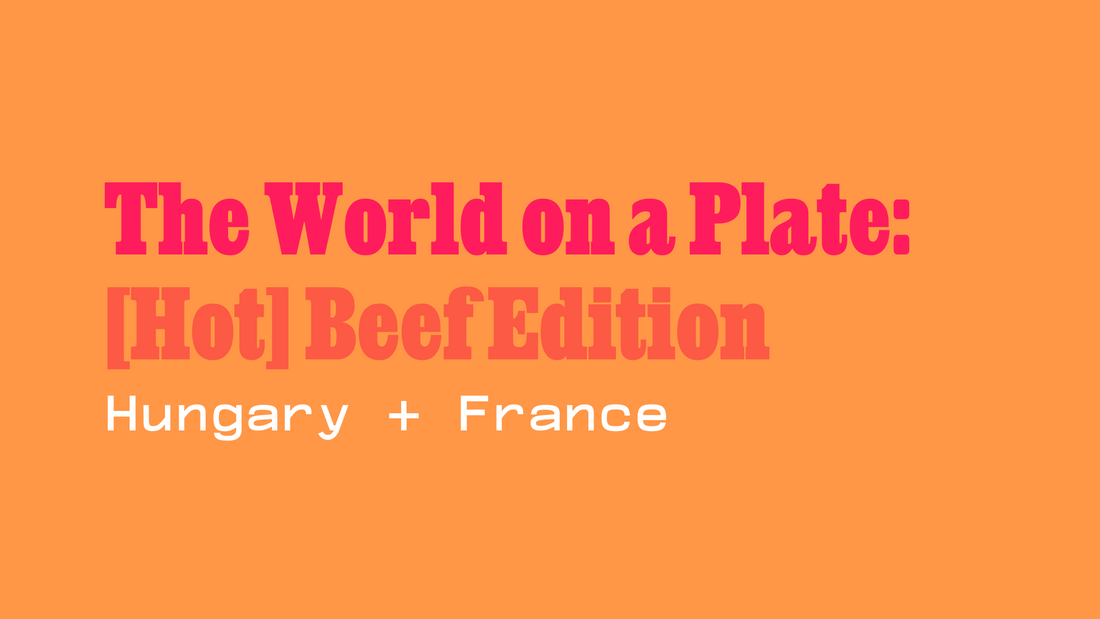Ahoy Meaties!
With high hopes going into 2023, we’re expanding our horizons and going worldwide! Well, not literally. But we did want to dedicate a few of our future newsletters to talking about our favorite beef dishes from all over the globe. With an overwhelming appreciation for how other cultures cook and enjoy beef, we present to you our new series: The World on a Plate: [Hot] Beef Edition.
First up, we’re taking our imaginary Happy Valley Meat aircraft first to France, and then making our way via car to Hungary. We hear the views while driving through Austria are breathtaking, plus we can stop in Munich for the must-have weisswurst (traditional Bavarian white sausage).
France: Pot-au-feu
What was then a French peasant dish is now one that represents French culture in one bowl. Pot-au-feu is typically made with a variety of beef cuts like chuck, brisket, and round. These cuts are known for their rich and beefy flavor, but also considered much more affordable cuts which is why it was popular for peasants back in the 17th century when the dish originated.
Pot-au-feu didn’t make it to the French upper class until the 18th century. They got fancy and upgraded the dish by adding higher quality cuts like veal and garnishing with condiments like pickles, mustard, capers, and more. By the 19th century, pot-au-feu was being served family style across the country. A large platter with all the cooked meats and vegetables was passed around the table, and then topped by the broth. The dish came to represent sharing and camaraderie around the dinner table, typically served as a weekend meal.
The hero of this dish is, no doubt, the broth! After hours of soaking up the flavor and nutrients of the meats, this stuff is liquid gold. Pot-au-feu literally translates to “pot on the fire” since it cooks on low heat for such a long amount of time. A necessity for this dish? Bread to dip and soak up all the broth that gets left off your spoon.
Hungary: Goulash
In the spirit of beef stew, we’re making our way to Hungary and back to the 9th century to dive fork first into goulash: a traditional Hungarian stew made with beef, onions, paprika, and other spices. Back in the 800s, nomadic Magyar tribes were settling into what would become the Hungarian region. As herders, they needed a stew that would keep them burly, sustain them, and give them energy for their long journeys ahead. They would prepare a type of stew similar to today’s version of goulash. When these tribes settled and formed the Hungarian nation, the dish evolved over the next hundreds of years and became a staple of the region’s cuisine.
Although common and we probably all have it hiding in our spice cabinet somewhere, paprika used to be the cat’s pajamas when it first came to Hungary in the 16th century. Even now it’s said to be a staple ingredient in the traditional dish. You’ll find potatoes and veggies like carrots and bell peppers nearby while preparing goulash.
If you want to check the authenticity box when enjoying this dish, serve with “csipetke” (small egg dumplings) and top everything off with sour cream while everything is still piping hot.
Now that we’re officially craving beef stew of some kind, we’re getting off our imaginary plane, getting our hands on beef shank, and heating up the crock pot ASAP. Which country’s beef dishes should we try next?

